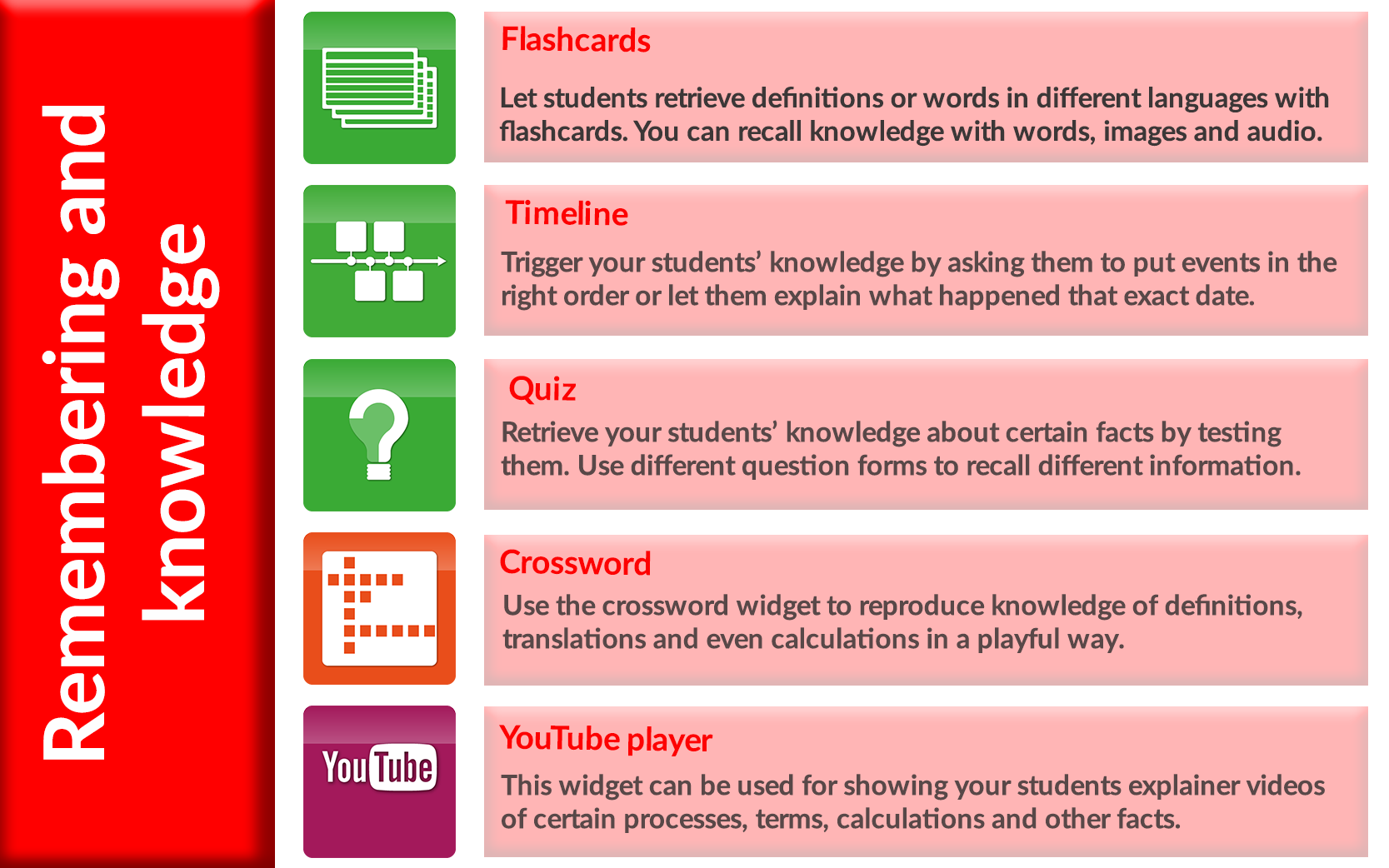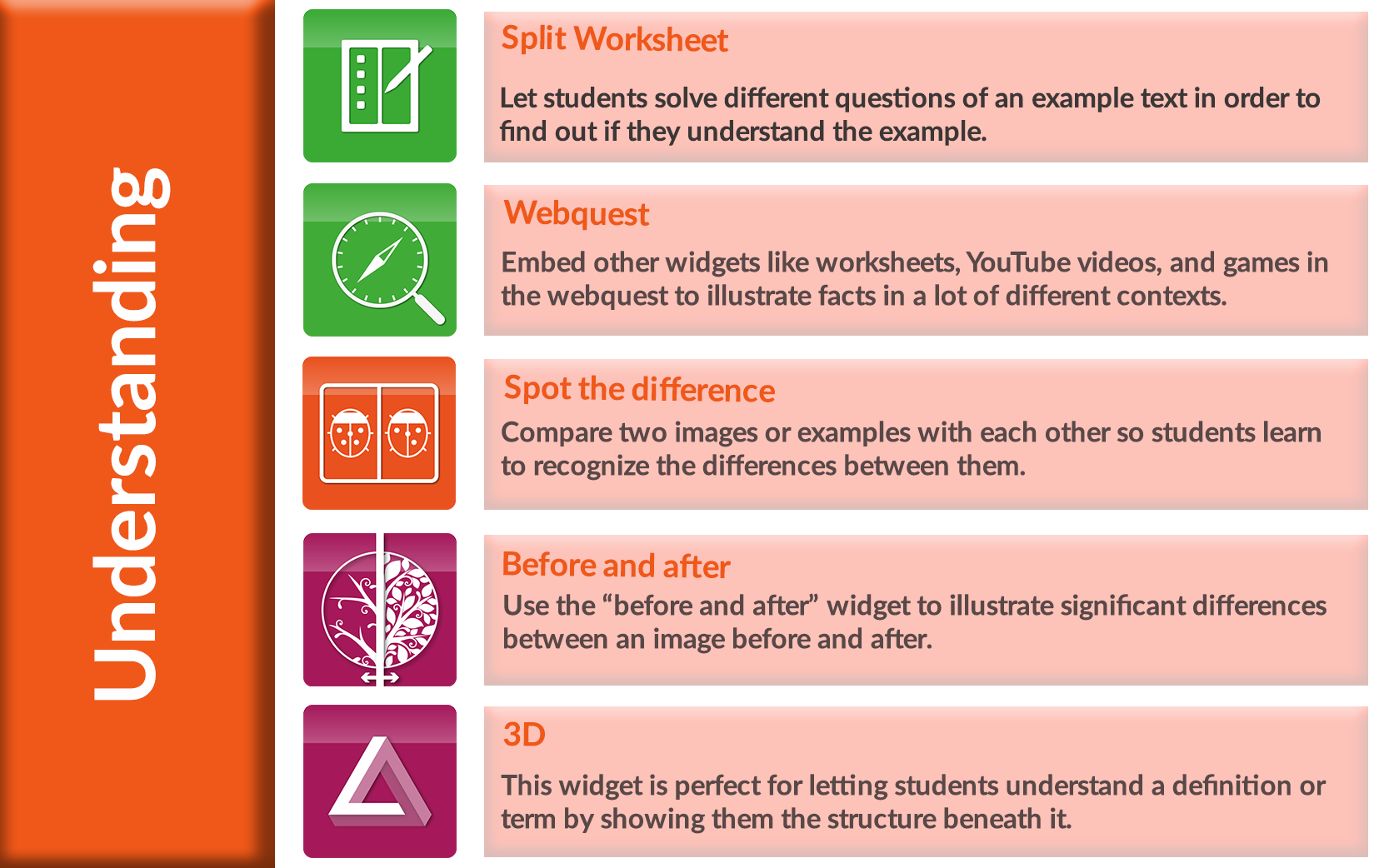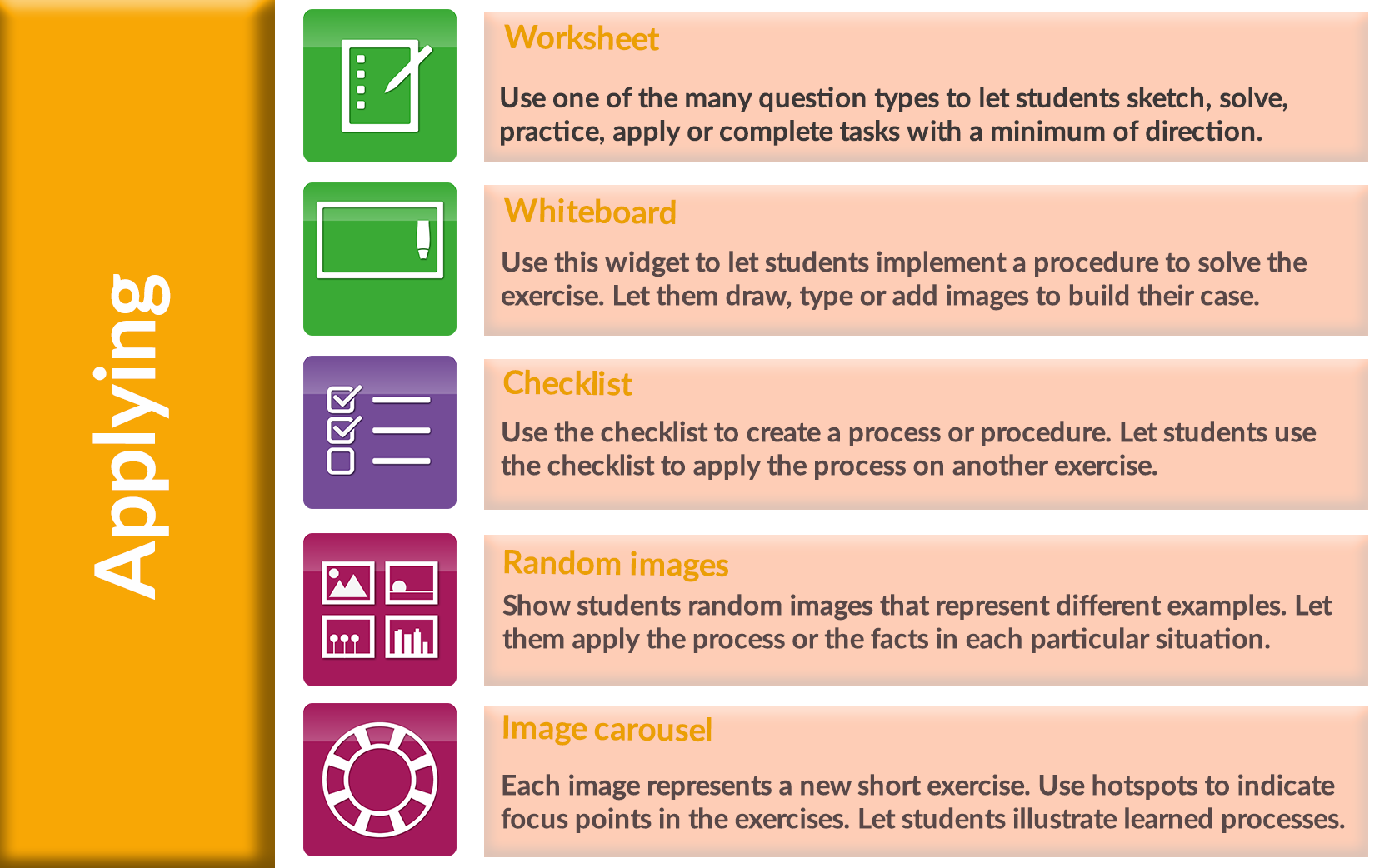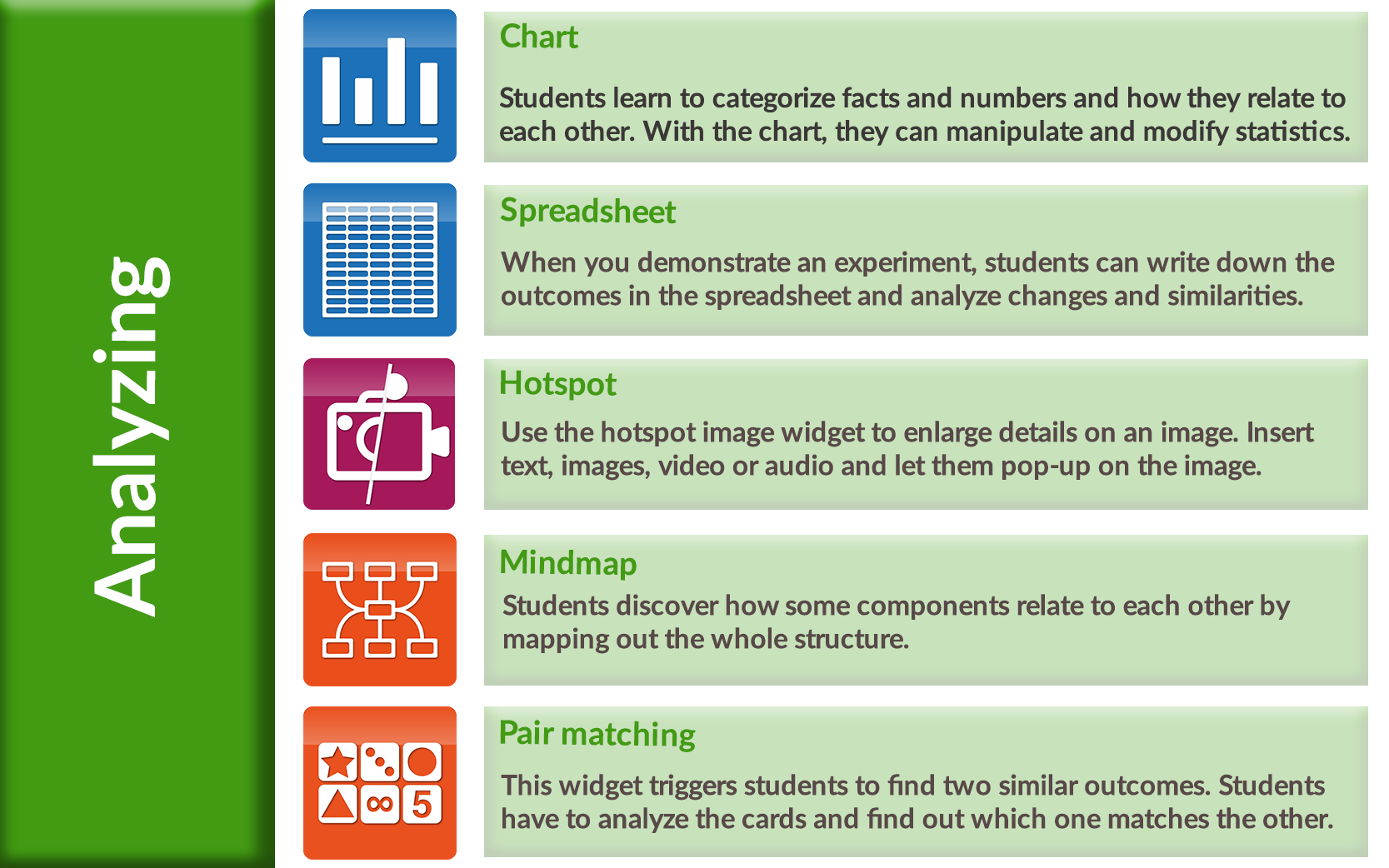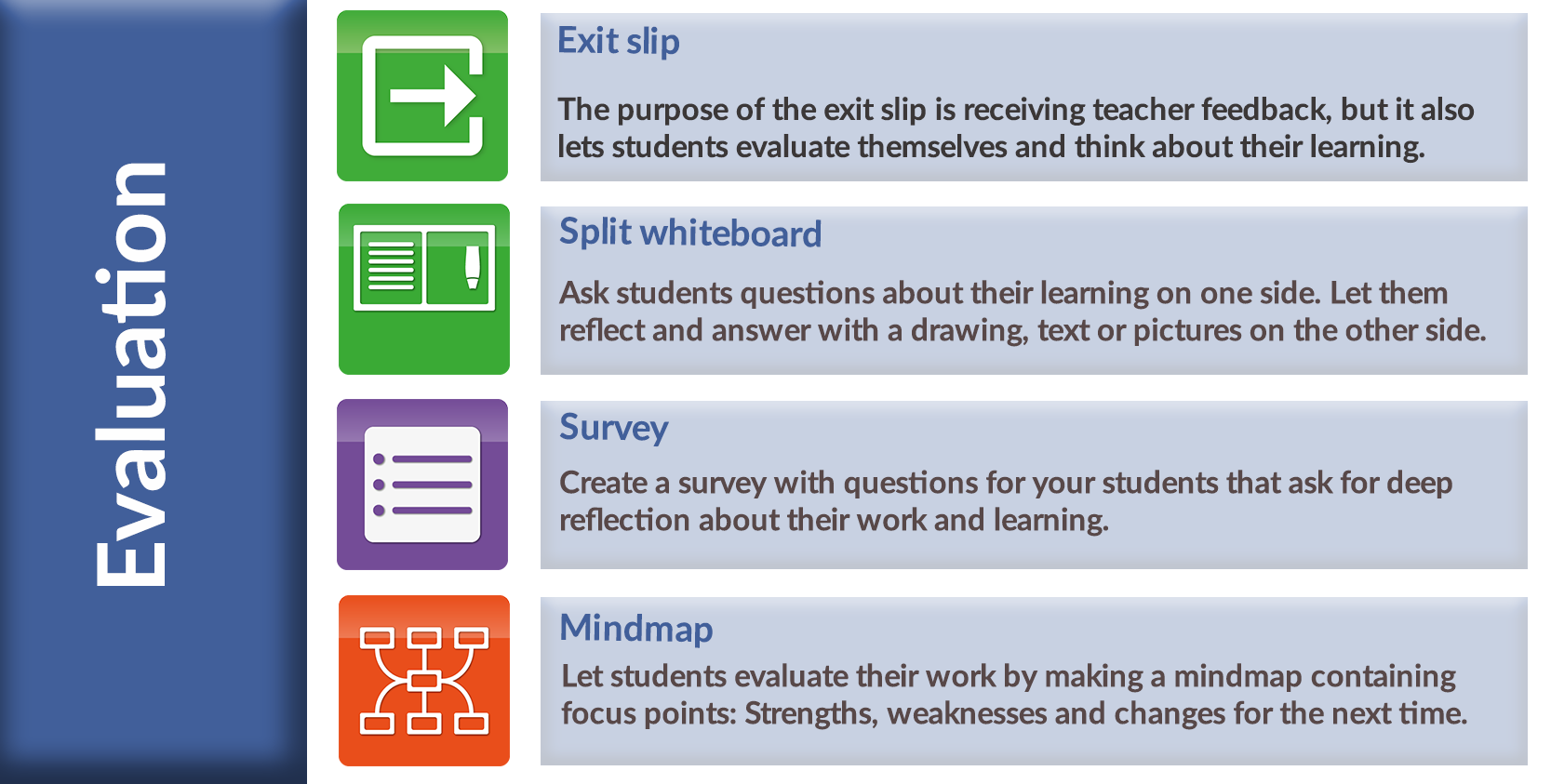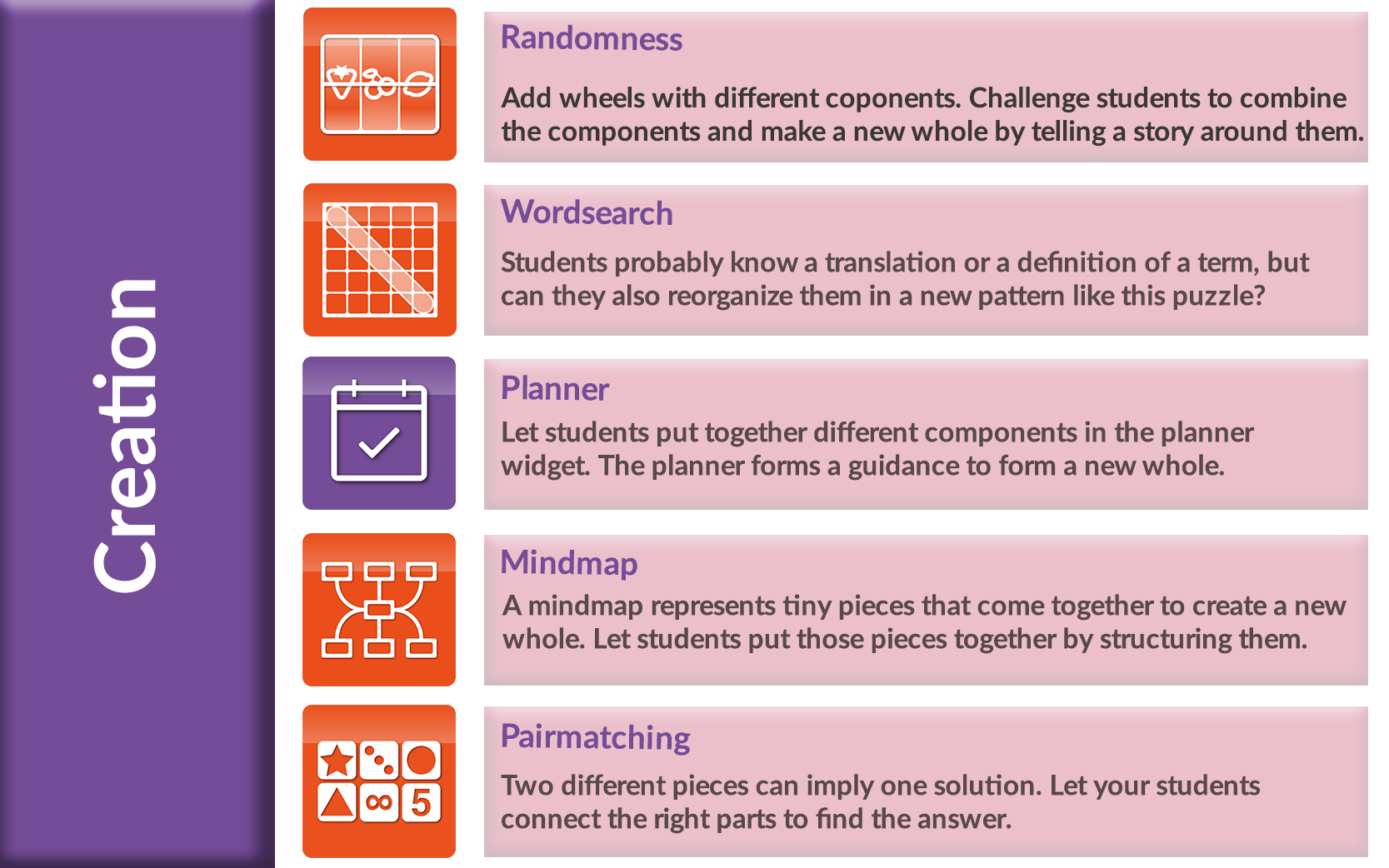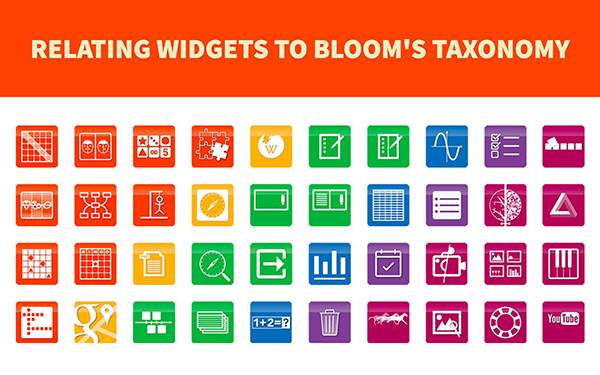How to relate BookWidgets to Bloom's taxonomy
 Lucie Renard —
Lucie Renard —
If you’re a teacher, you probably know Bloom’s Taxonomy of learning objectives. It’s a key piece of many education systems around the world.
In this post, I’ll briefly explain Bloom’s taxonomy again, but more importantly, I’ll show you how you can interpret it with all the different kinds of widgets from BookWidgets. All these widgets have their own place in Bloom’s Taxonomy.
What is “Bloom’s Taxonomy”?
Let’s get familiar again with Bloom’s Taxonomy. Bloom’s Taxonomy is a classification of the different objectives and skills that teachers set for their students. In short: it’s a classification for learning objectives. The taxonomy, created by Benjamin Bloom, consists of 6 levels that can be used to structure the learning objectives, lessons and assessments of your course.
These are the 6 levels of the revised Bloom’s Taxonomy with an explanation:
- Remembering or knowledge: Here, teachers let their students retrieve, recognize and recall relevant knowledge from their long-term memory. Students are recognizing and recalling the facts.
- Understanding: In this level, students construct meaning from oral, written and graphic messages through interpreting, exemplifying, classifying, summarizing, inferring, comparing and explaining. Students basically try to understand what the facts mean.
- Applying: At this stage, the teacher learns his students to carry out or use a procedure through executing, or implementing. The students learn to apply the facts, rules, concepts and ideas.
- Analyzing: Here, students have to learn to break the material into constituent parts, determining how the parts relate to each other and to an overall structure or purpose through differentiating, organizing and attributing. They have to break down information and facts into component parts.
- Evaluation: Students must learn to evaluate their work and themselves. Making judgements based on criteria and standards through checking and critiquing covers that. They have to know how to judge the value of information or ideas.
- Creation: The last step in Bloom’s taxonomy teaches students to put the elements together to form a whole. This implies reorganizing elements into a new pattern or structure through generating, planning, or producing. Combining parts to make a new whole is the clue to the last step.
As you probably can see, these steps are already a part of your teaching process. Take for instance teaching your students how to write a haiku.
You call upon their knowledge about poetry and haiku’s, you explain how the Haiku is formed, you teach them how to distinguish a haiku from other poems in different exercises, you let them analyze the different exercises, and evaluate the outcome. “How are these exercises different from each other? What did I learn about that?”. Eventually, your students are ready to create their own haiku. And so the teaching process starts over again with a new topic.
Relating widgets to Bloom’s Taxonomy levels
What if I told you, you can get a little help with finding the right resources for the right level of Bloom’s Taxonomy? That makes being inventive a bit easier for you.
We have more than 40 kinds of widgets, and many of them can fit in several levels. Everything depends on the content you put in the widgets. That’s why I selected up to 5 widgets per level. I’ll also explain why I put those widgets in that level. Take a look at the images below and the explanation next to the widget.
